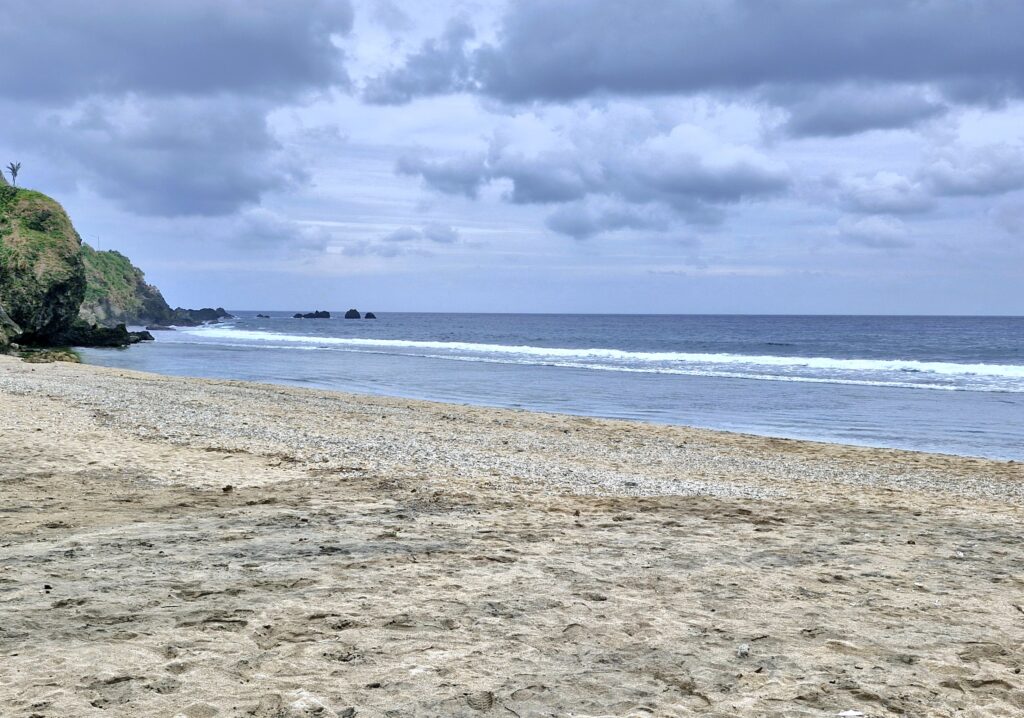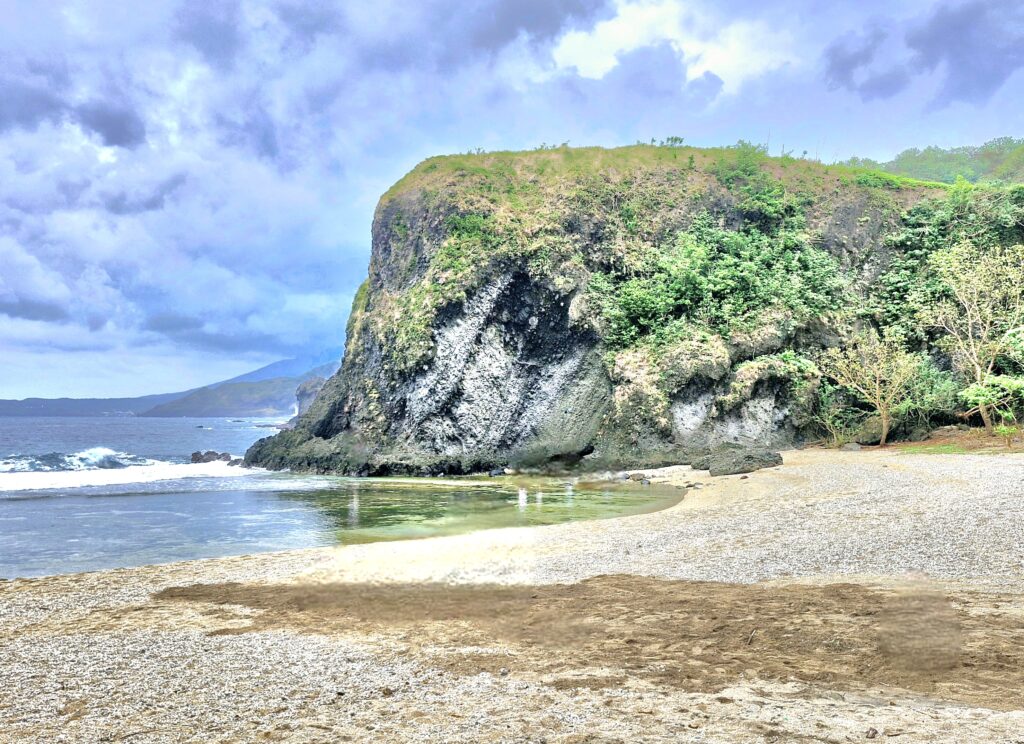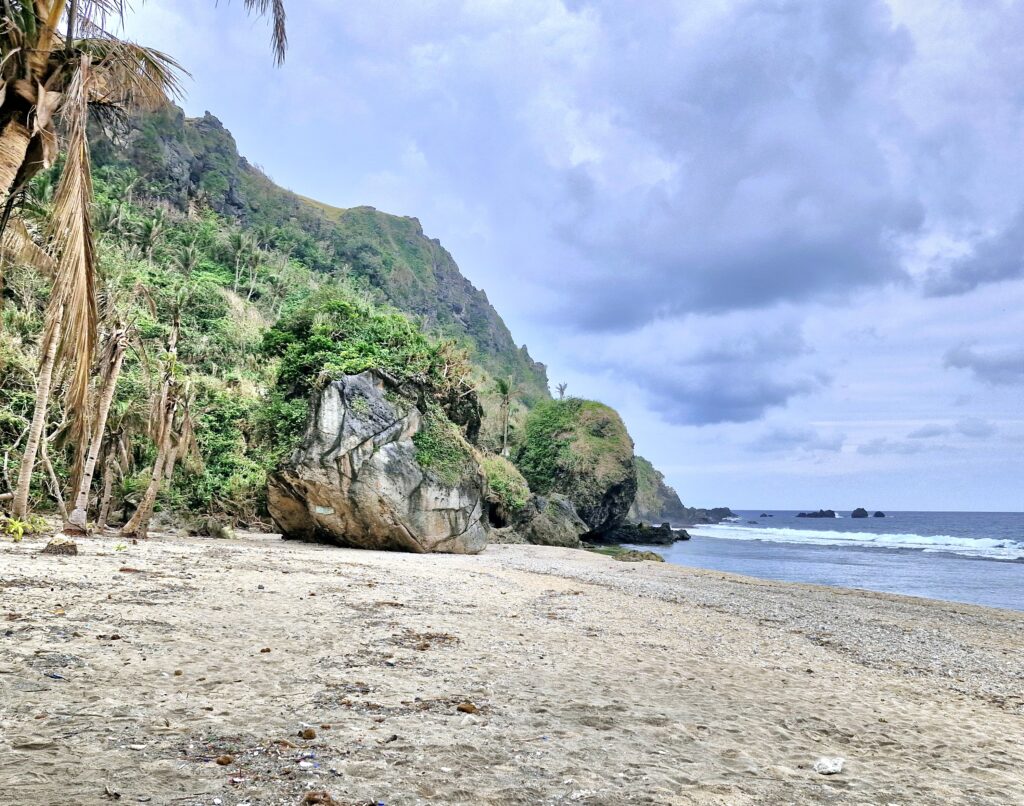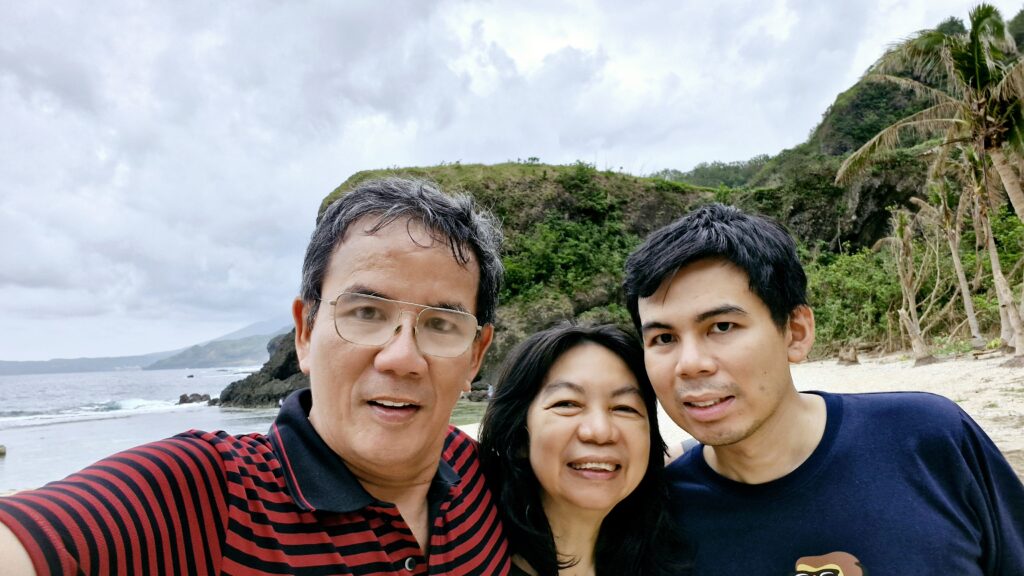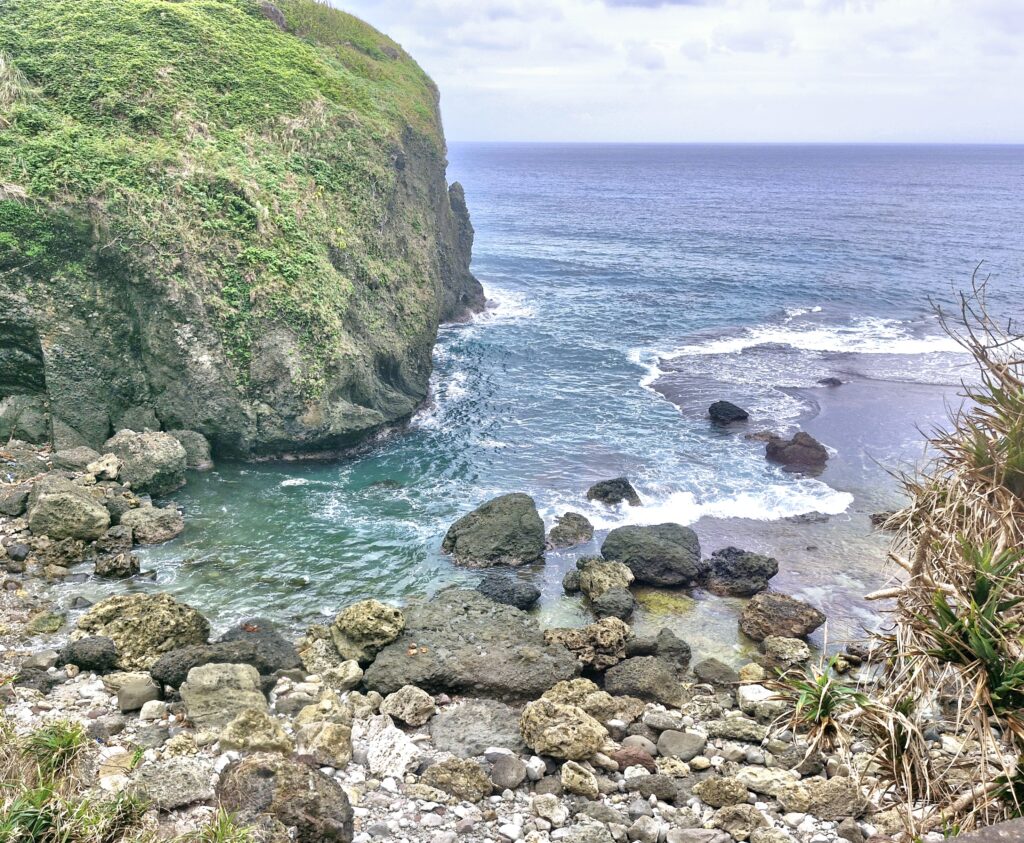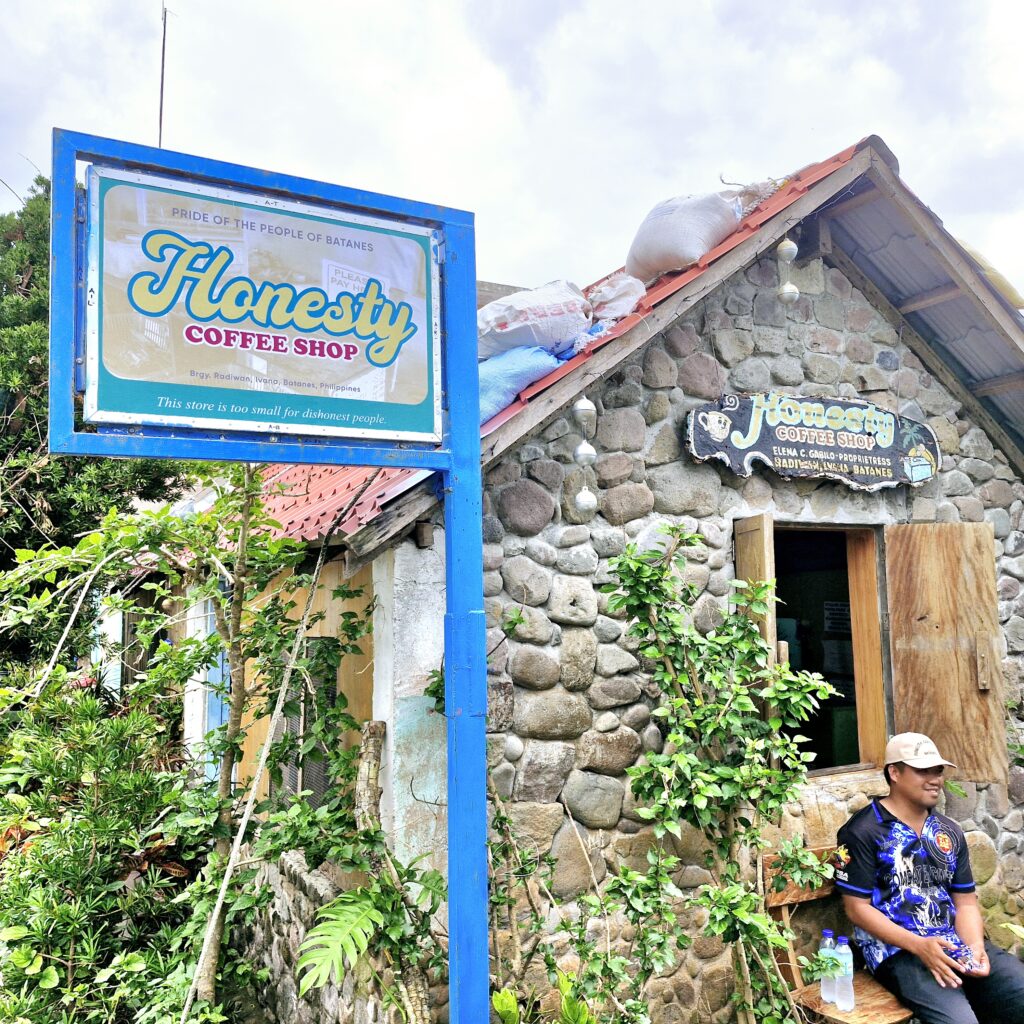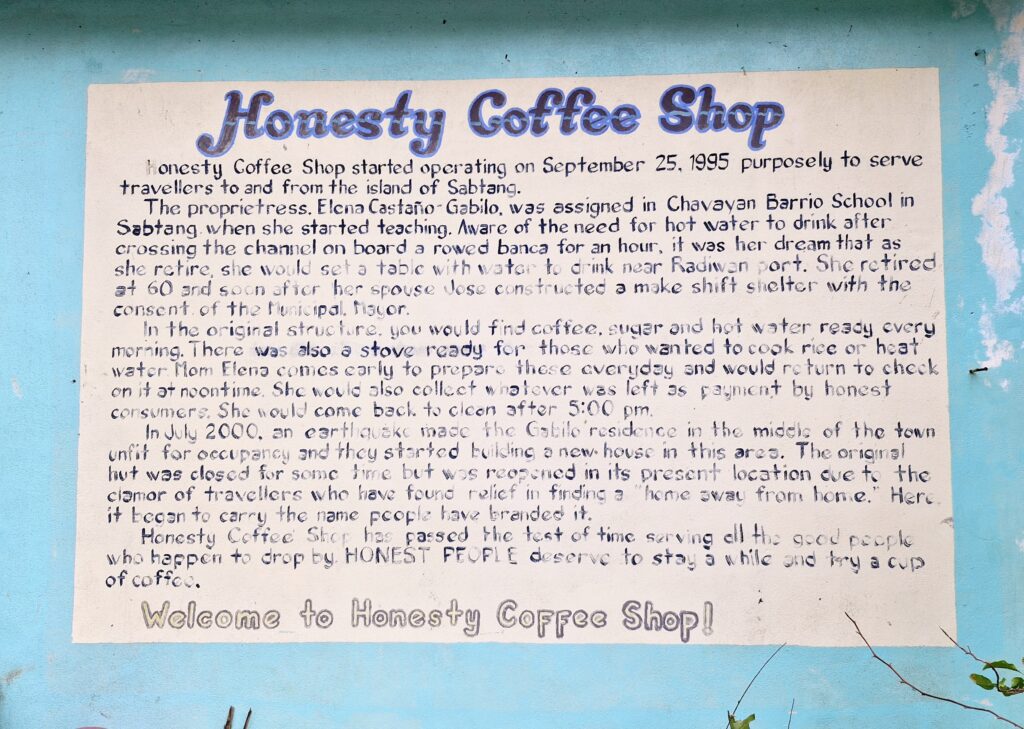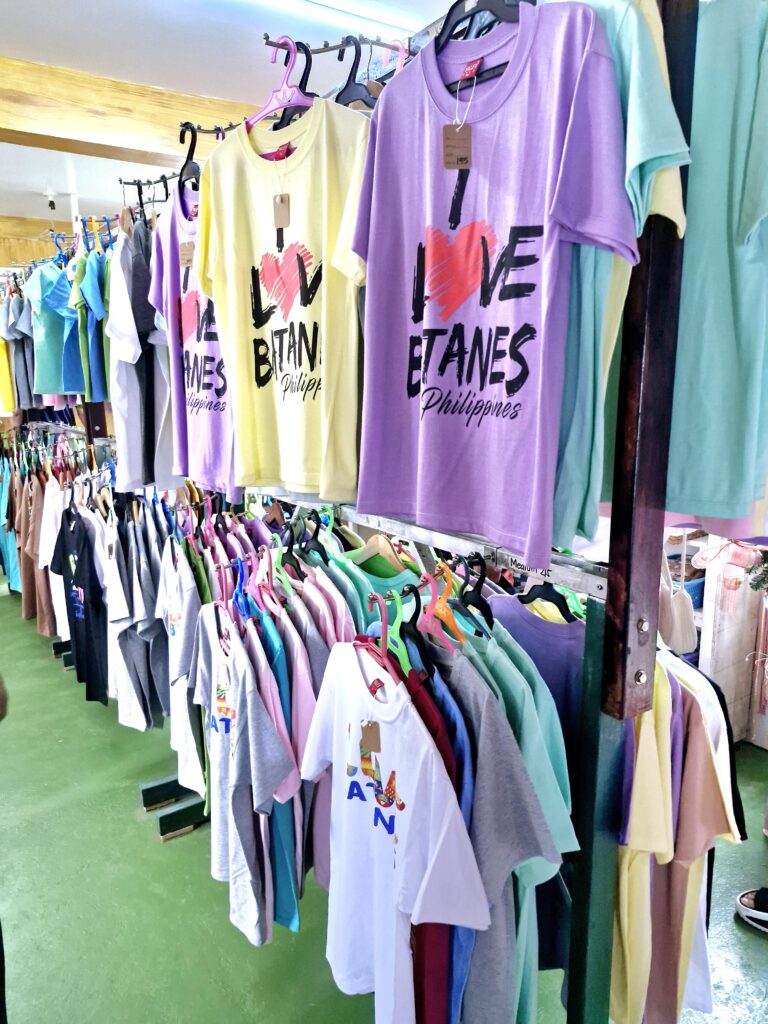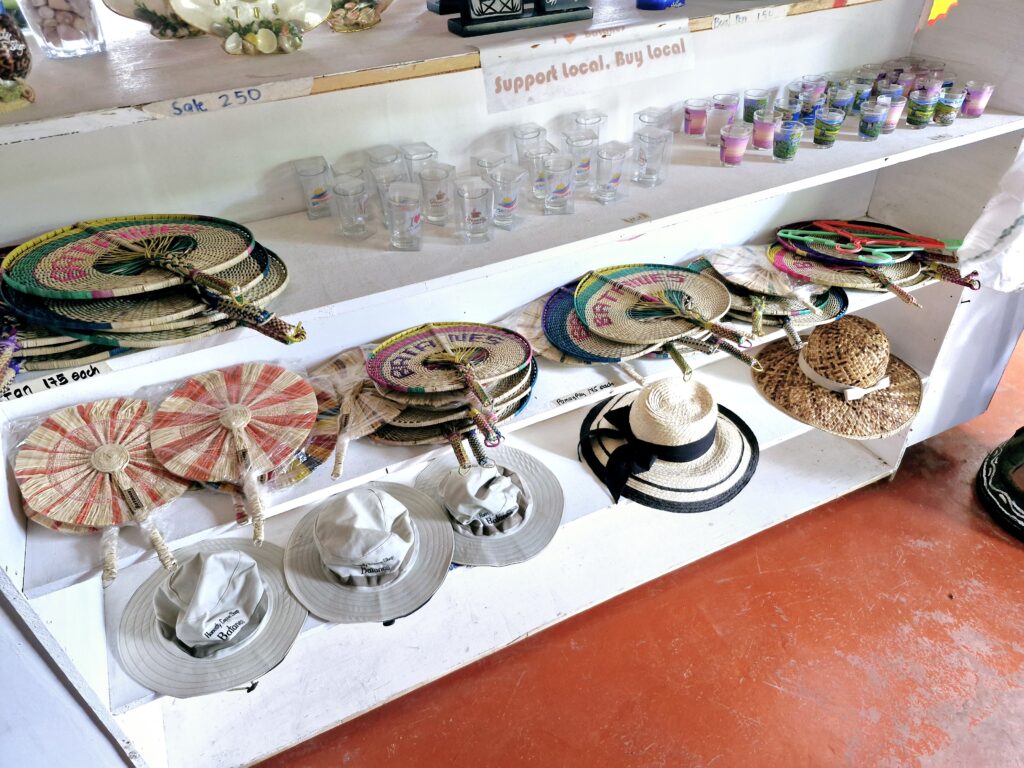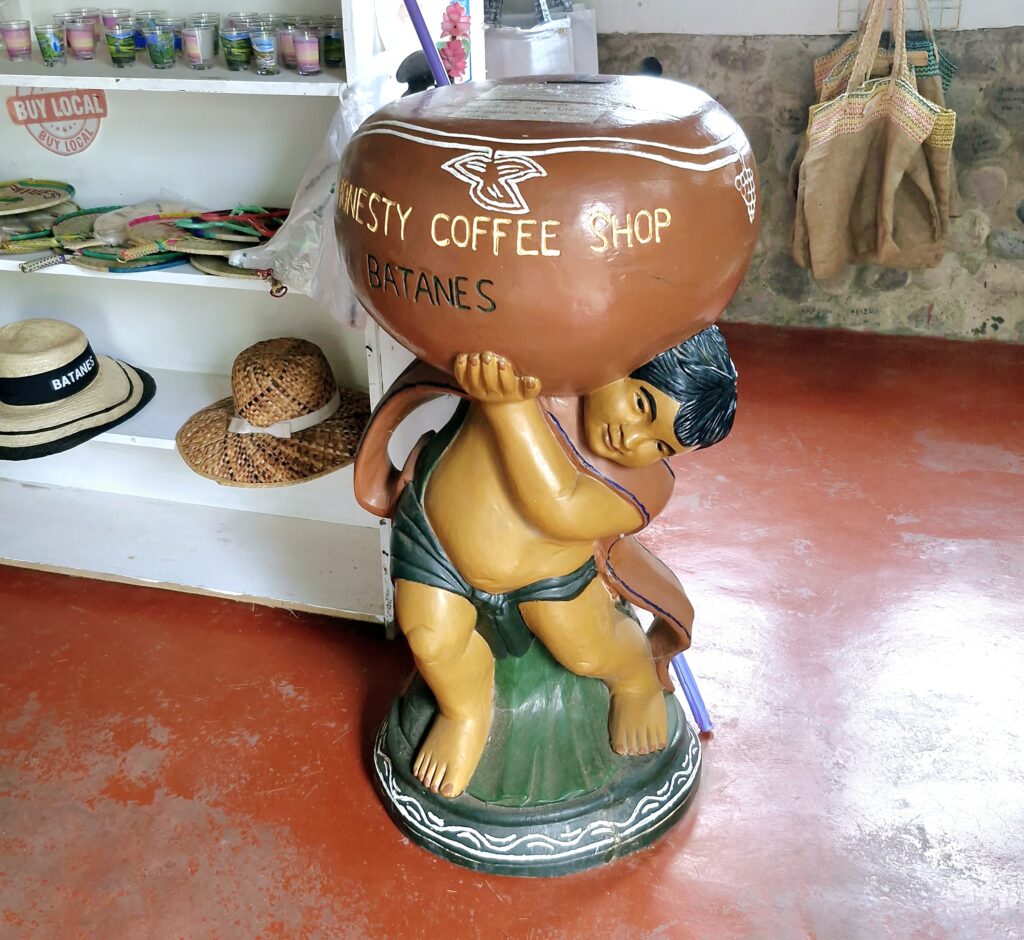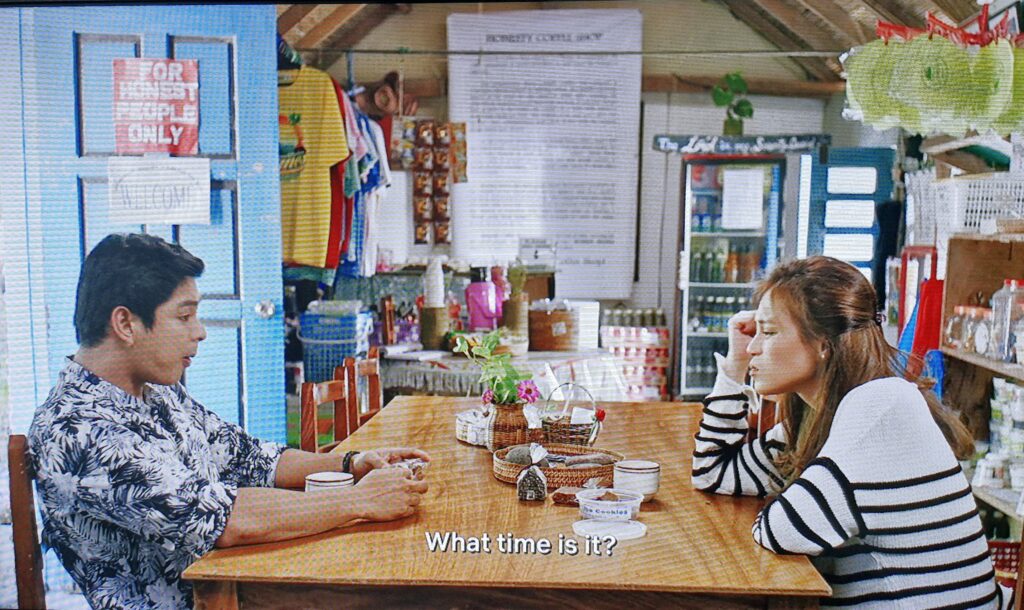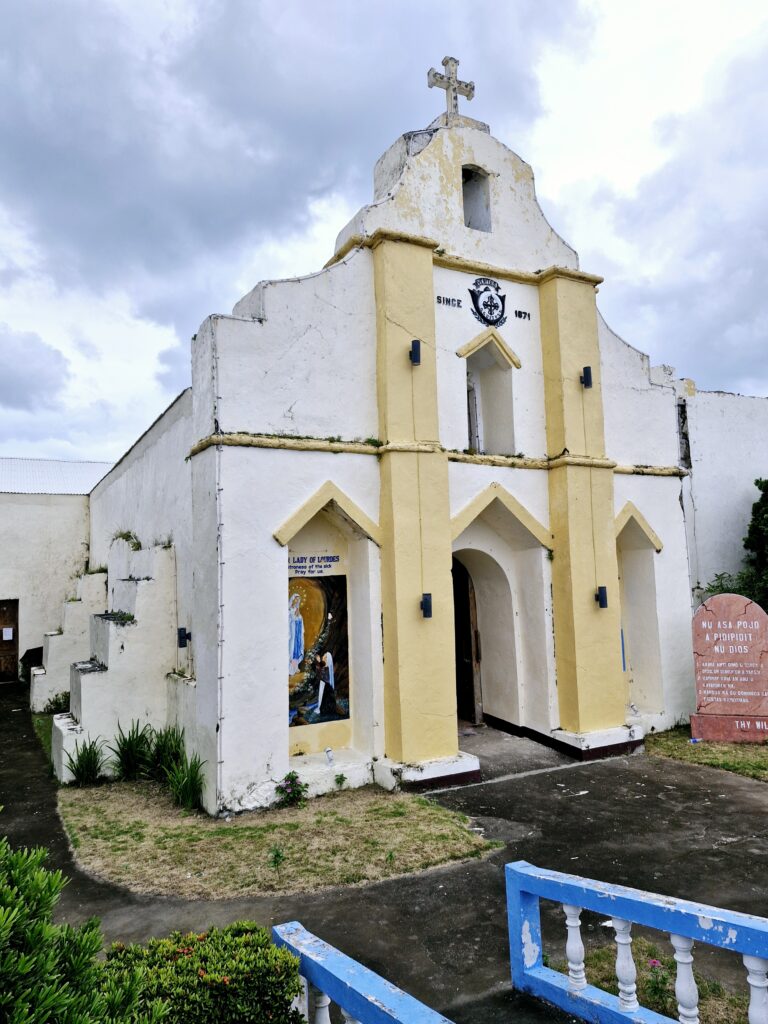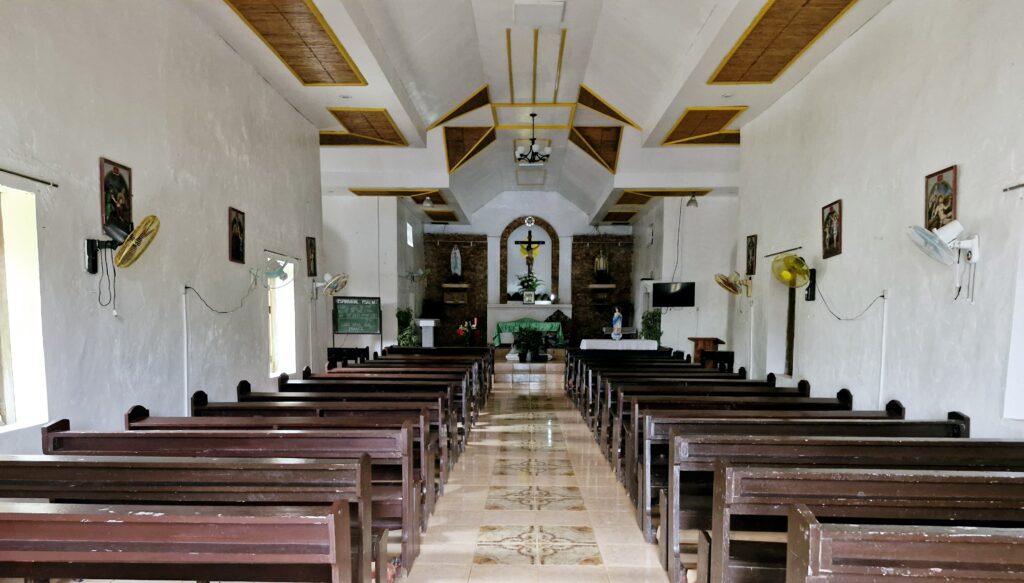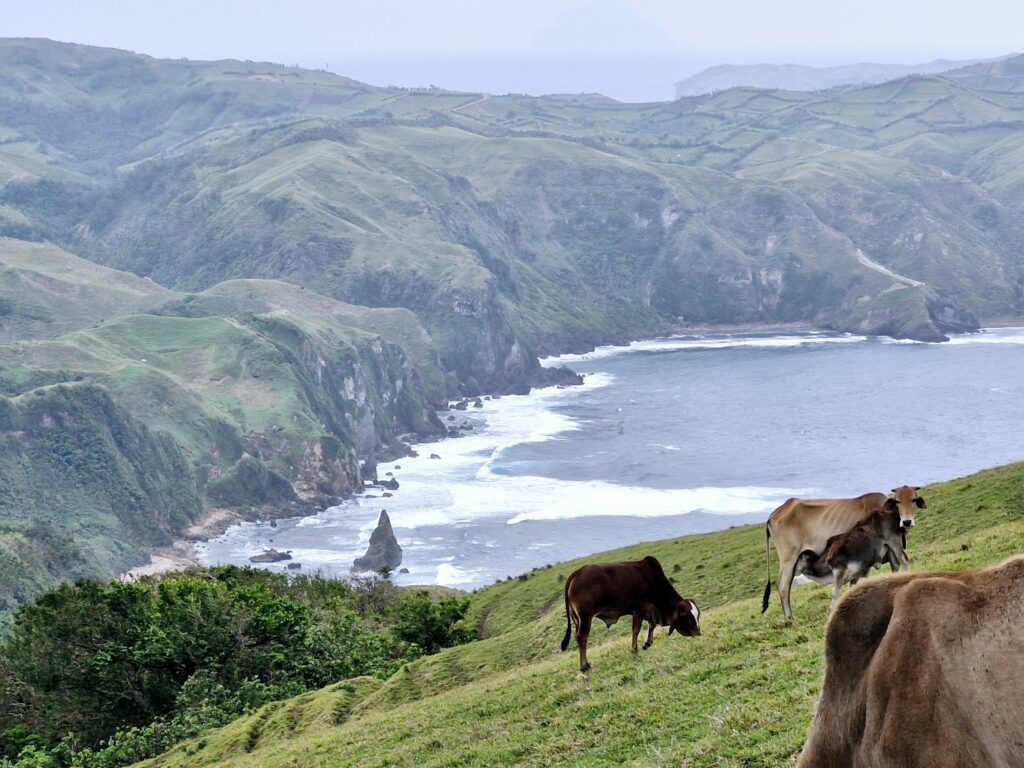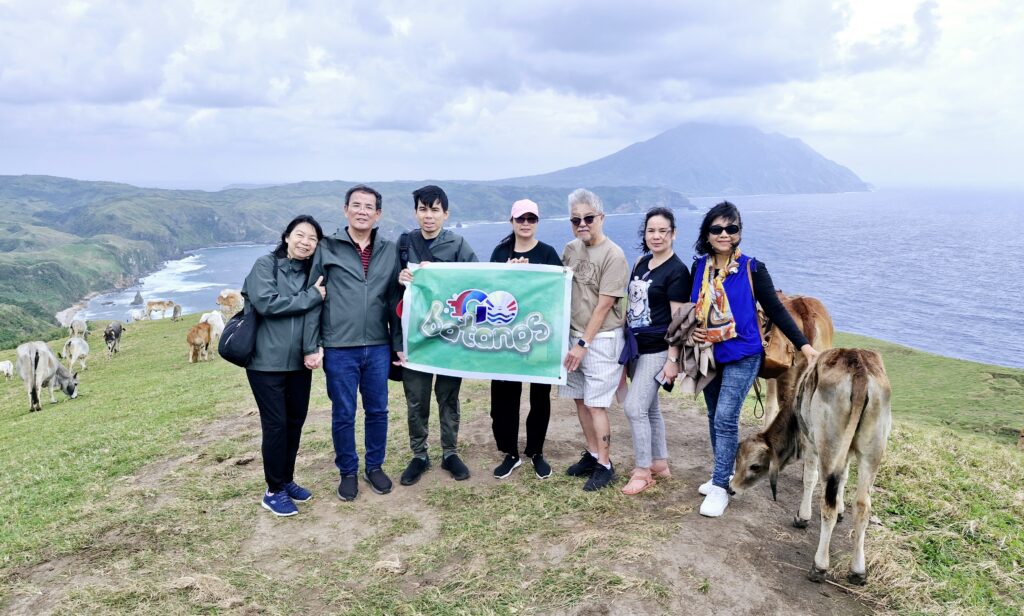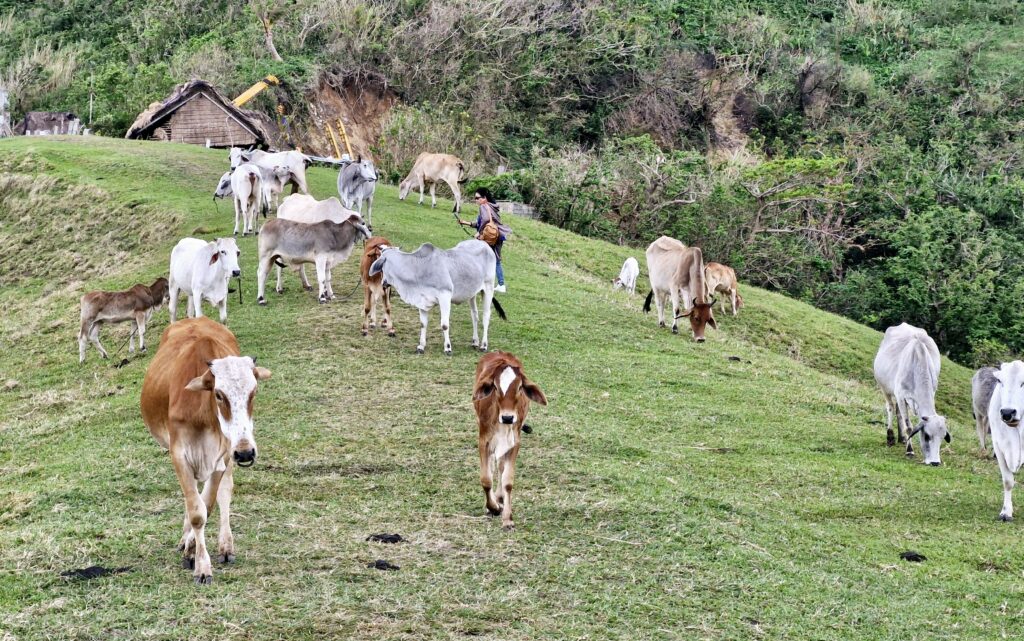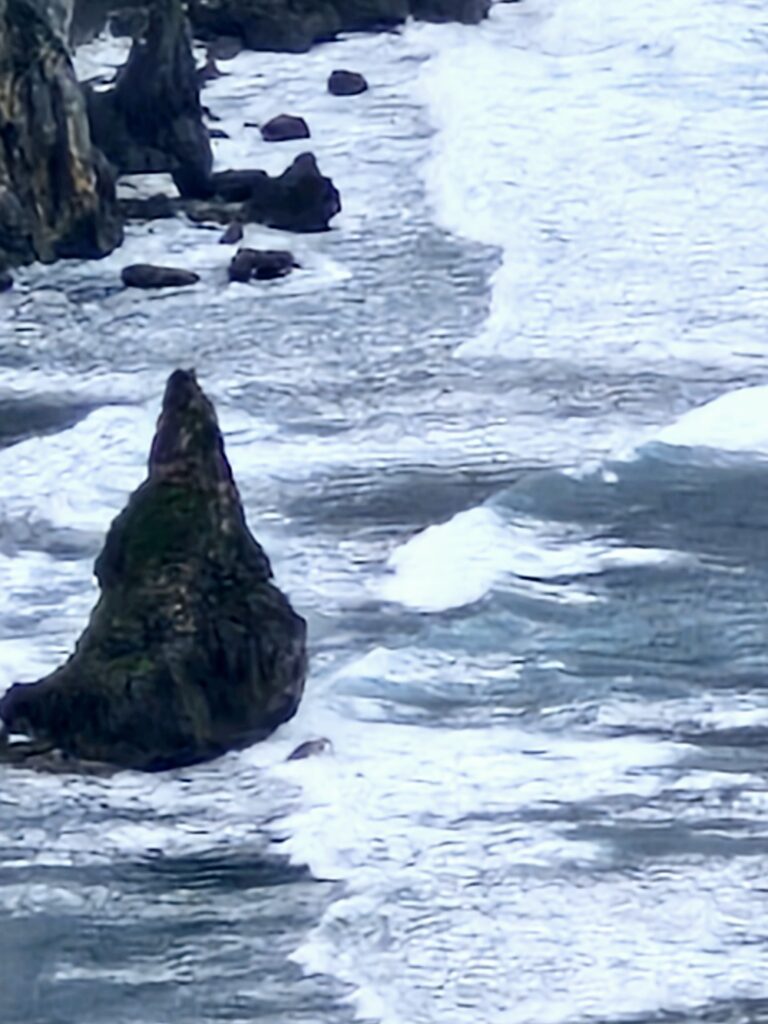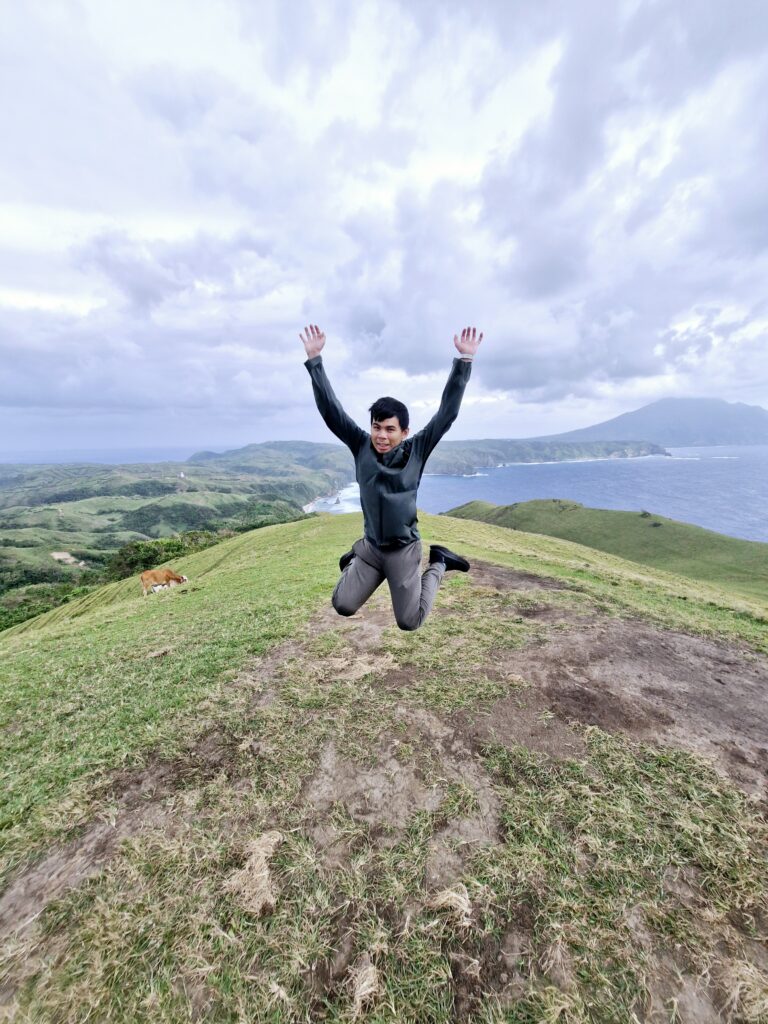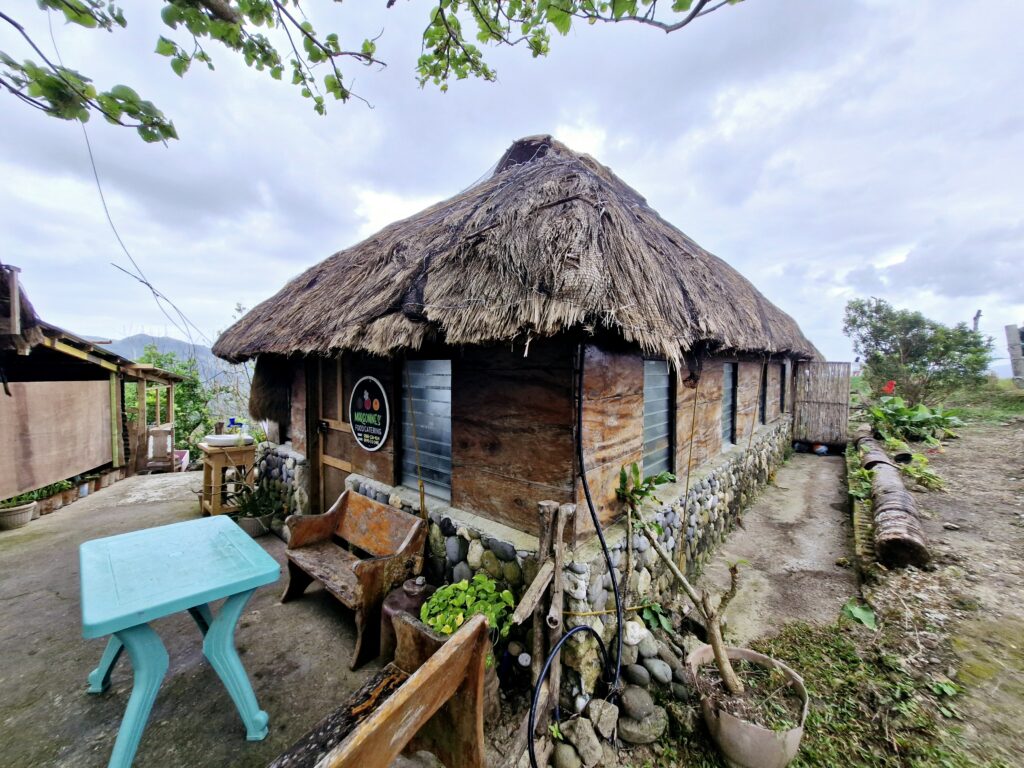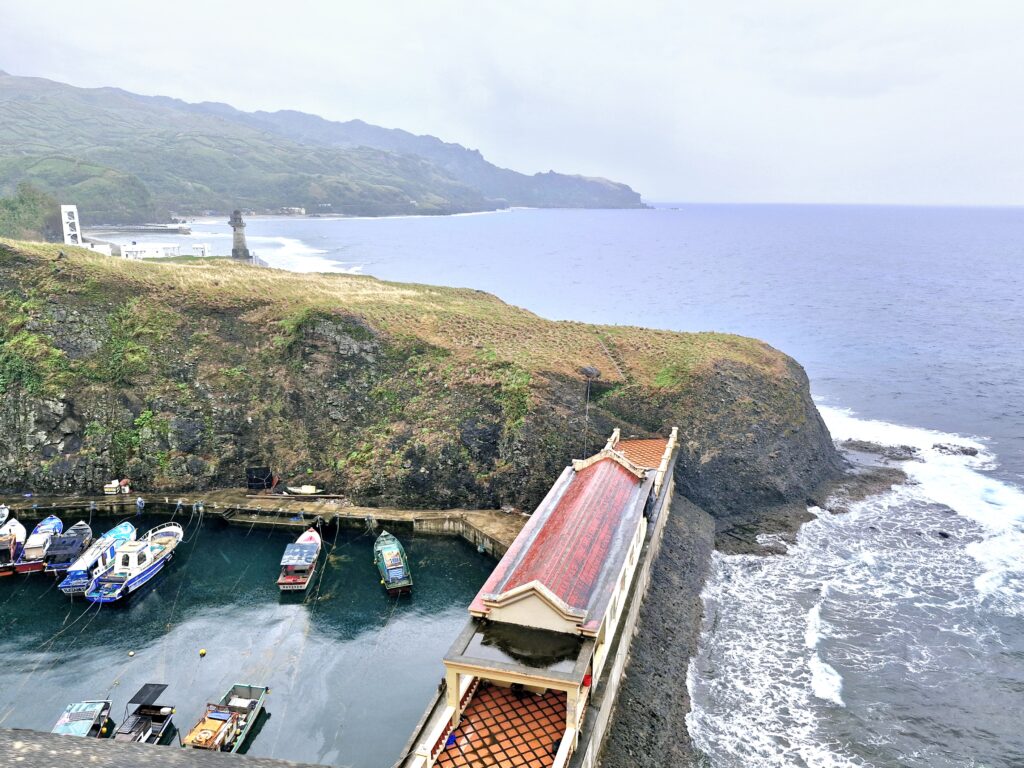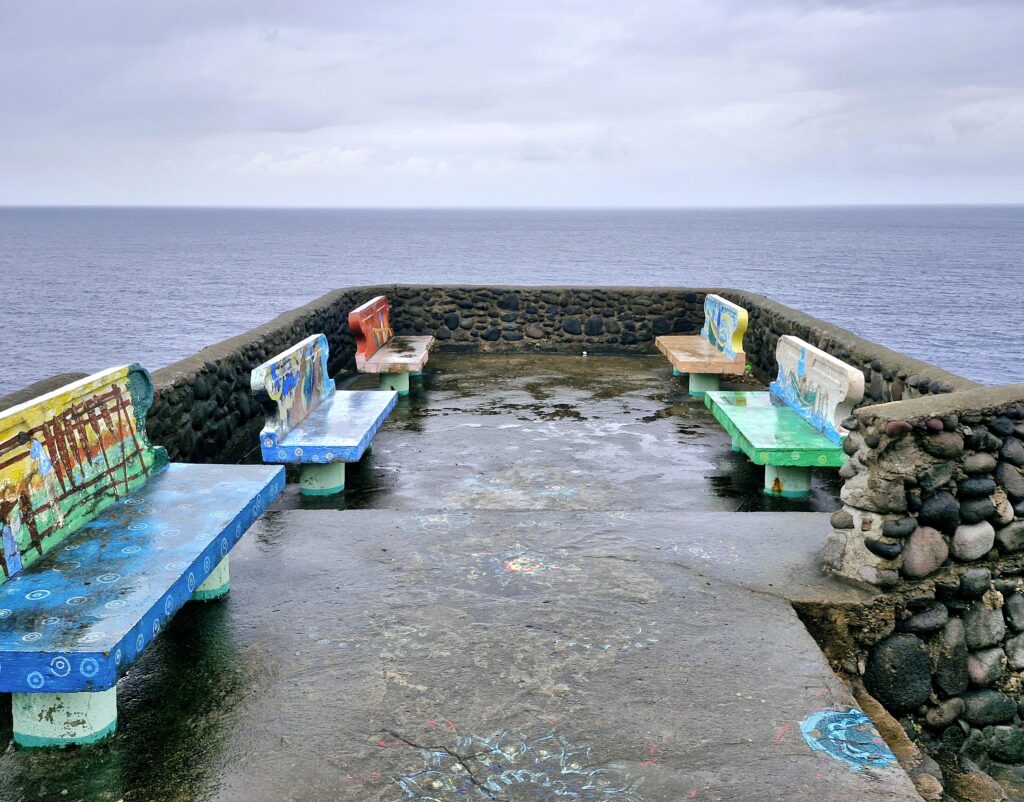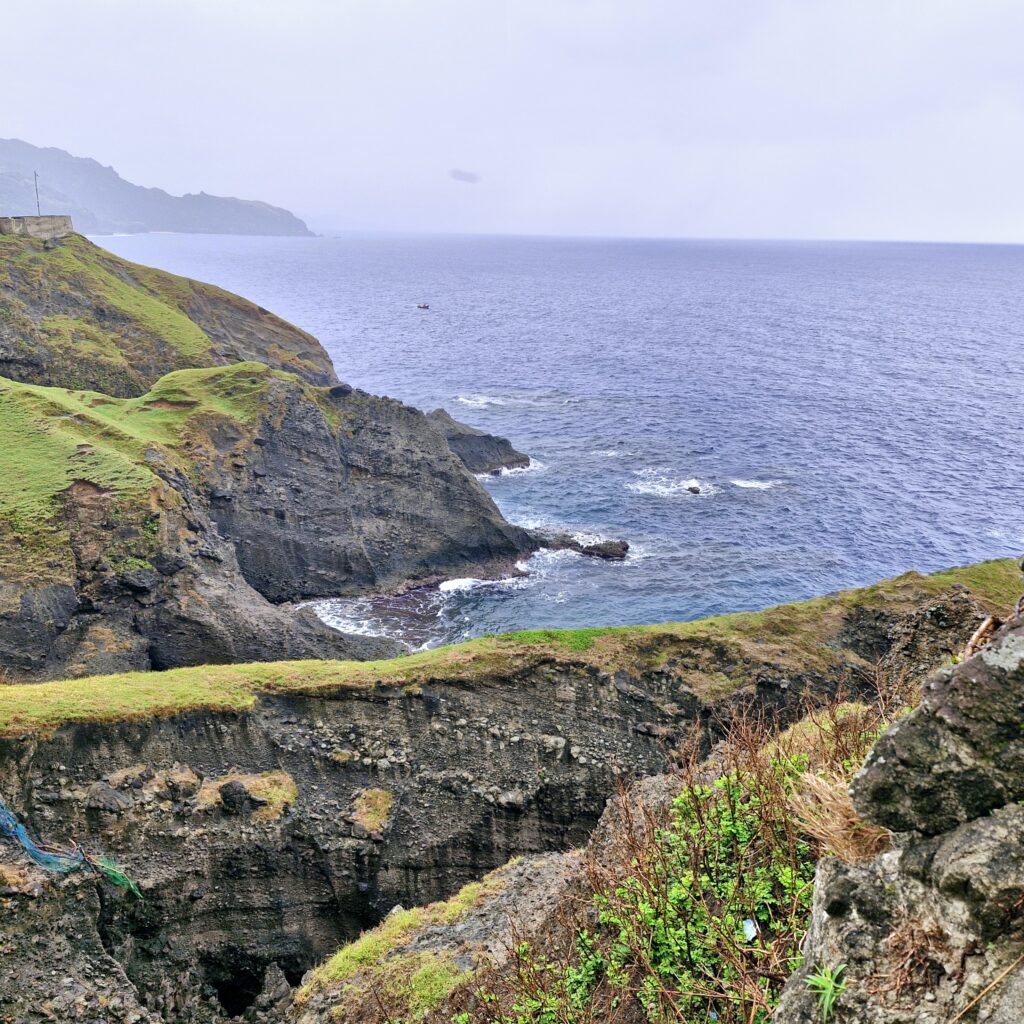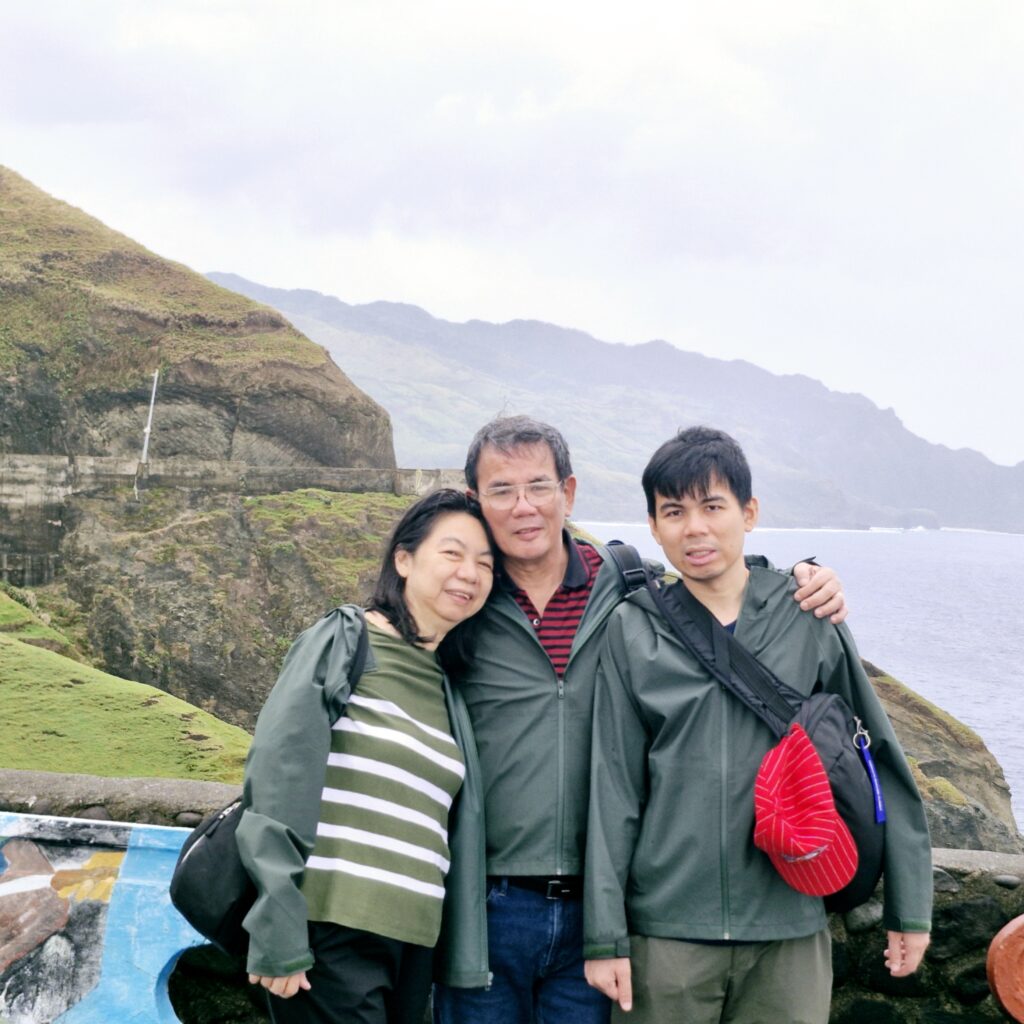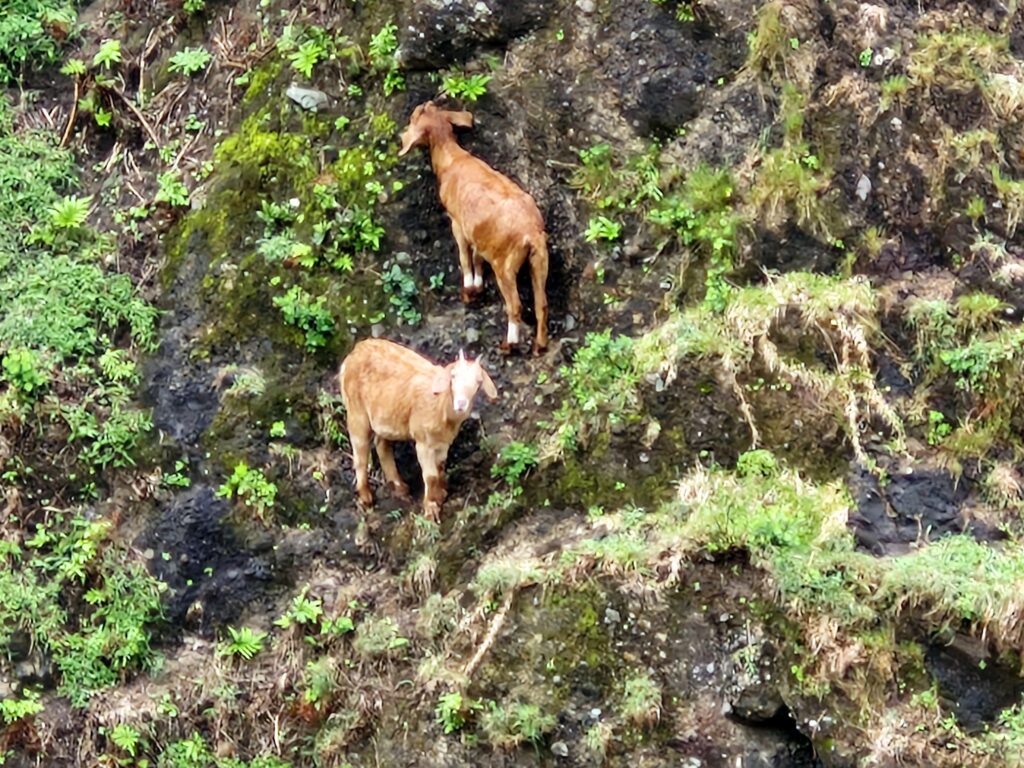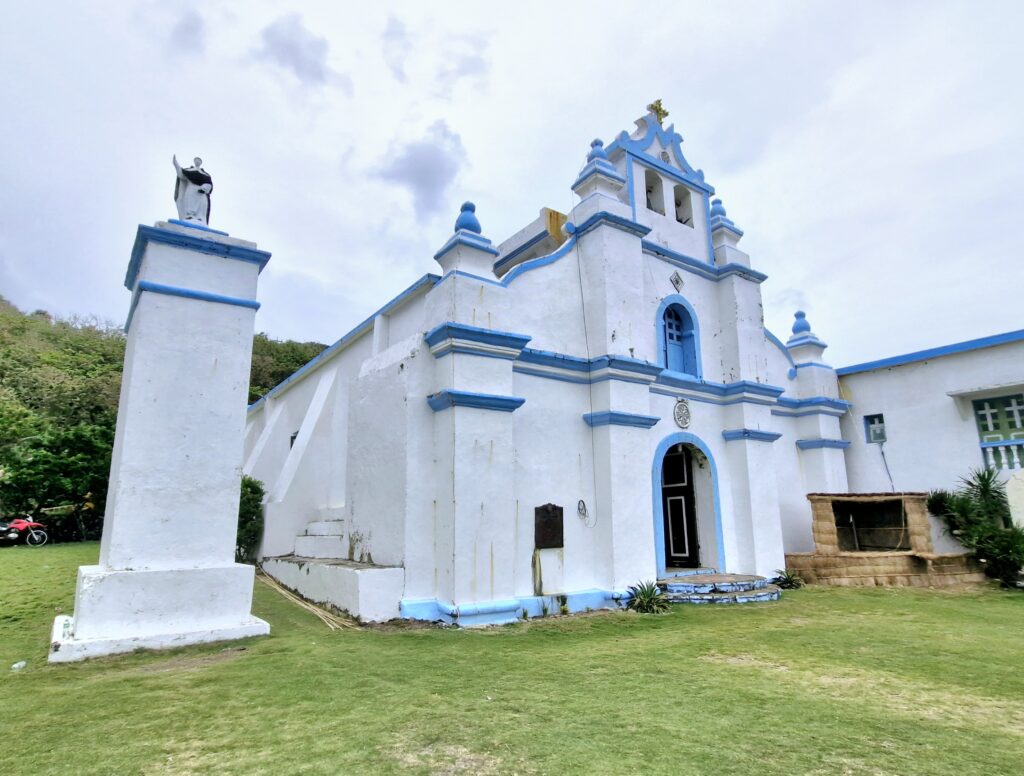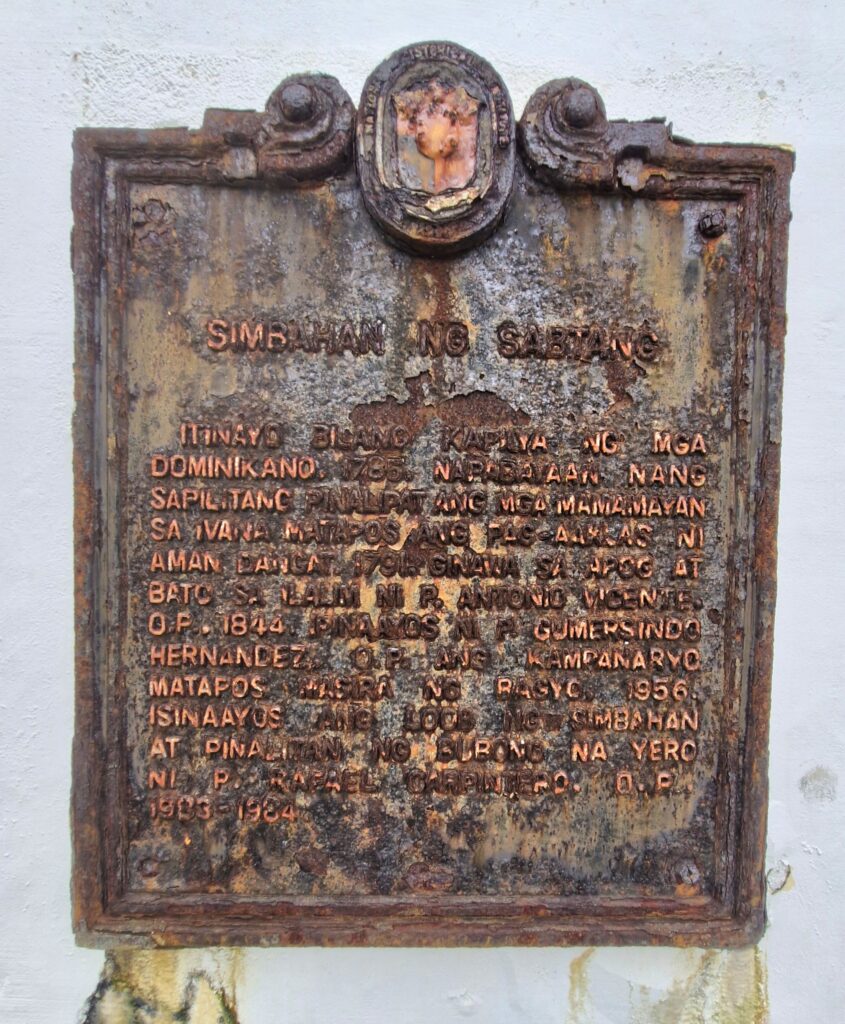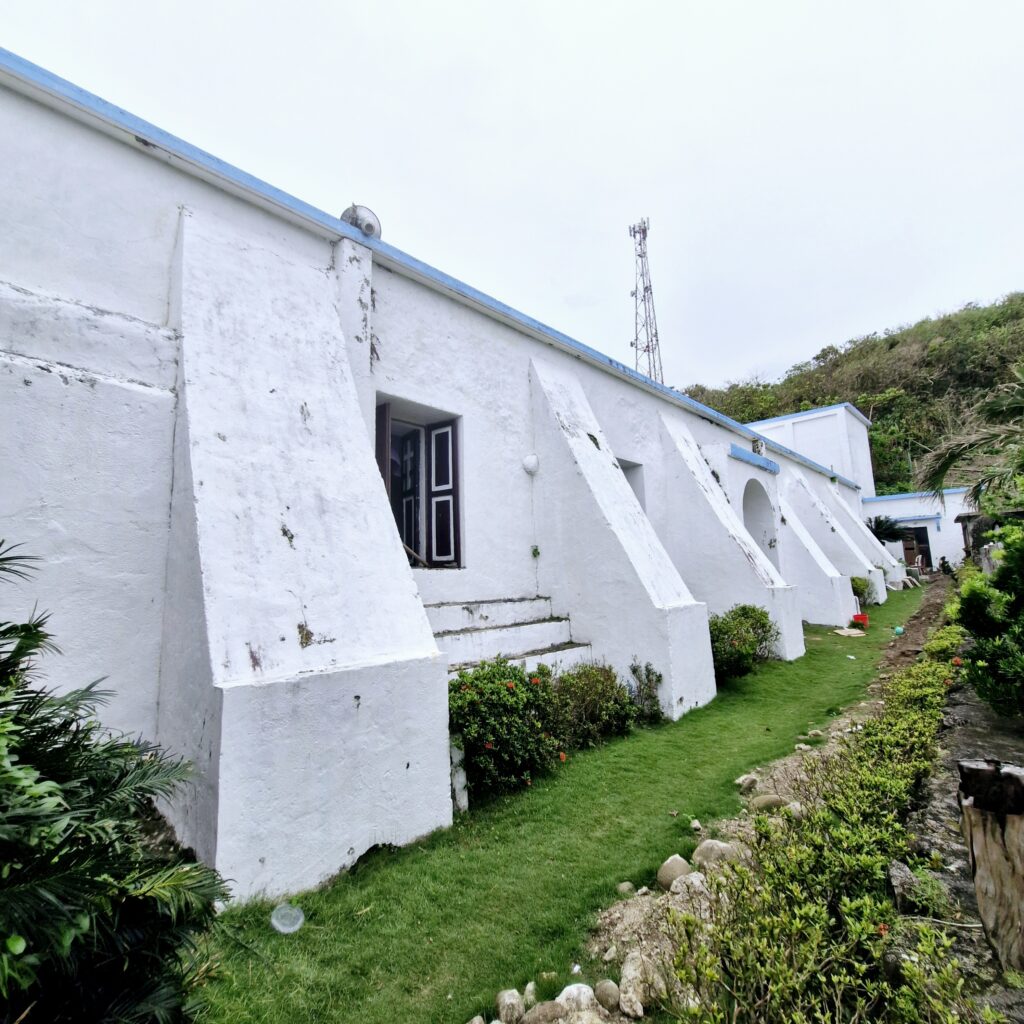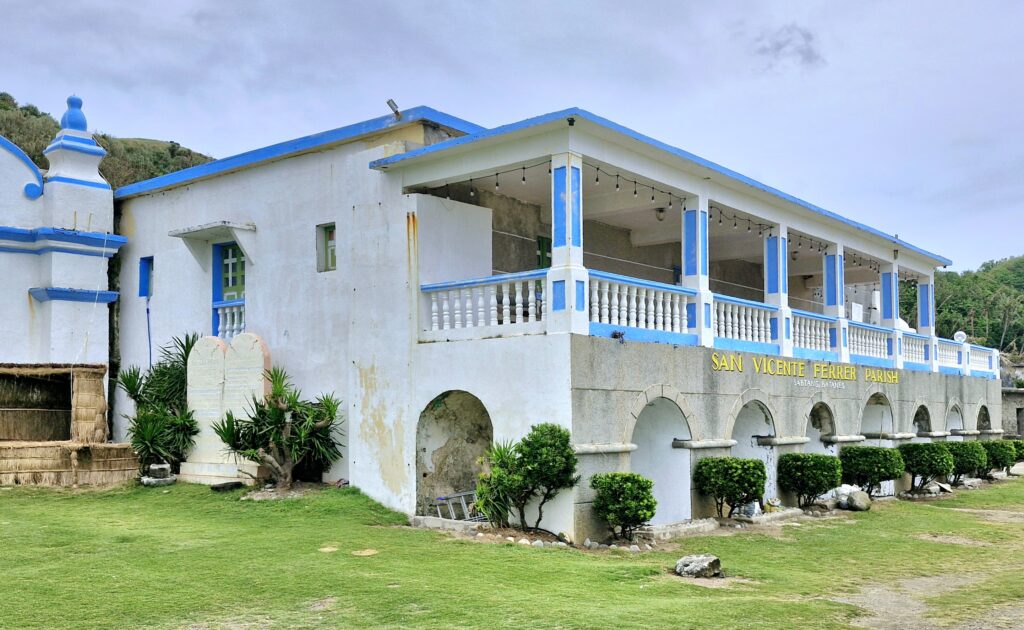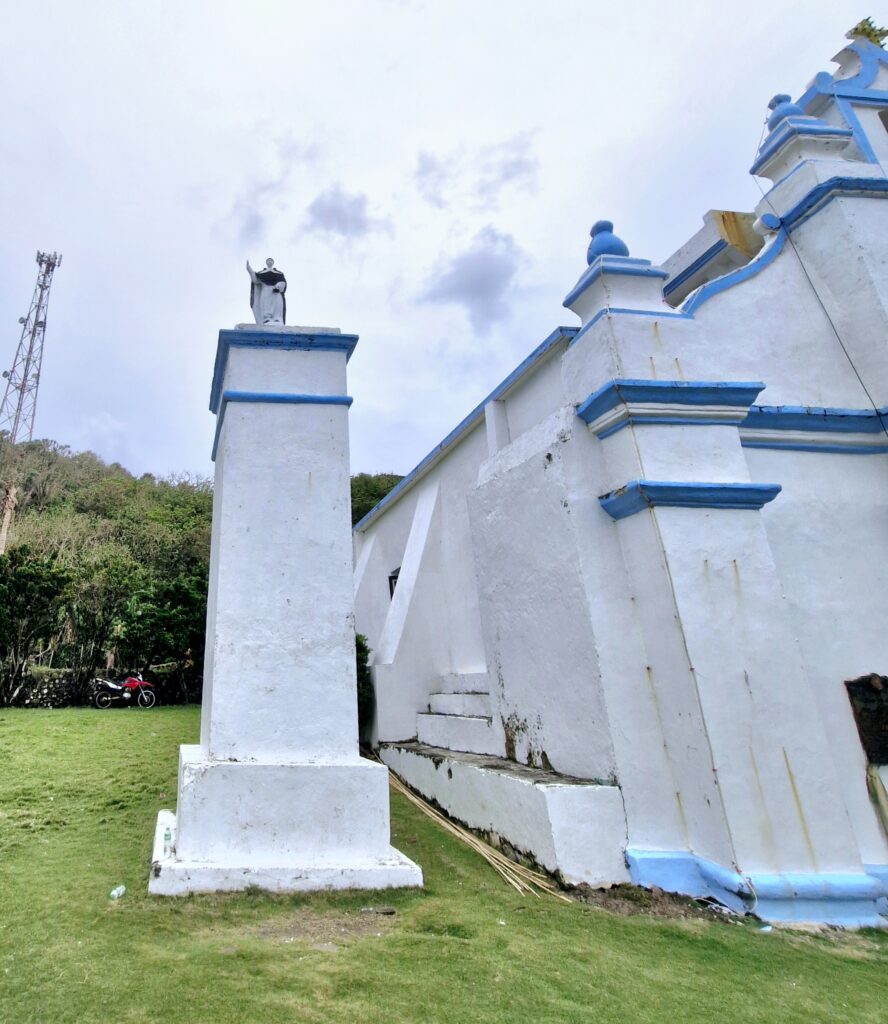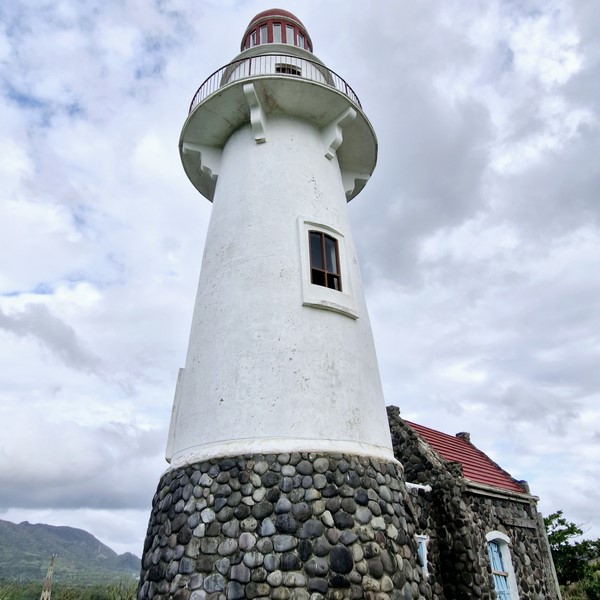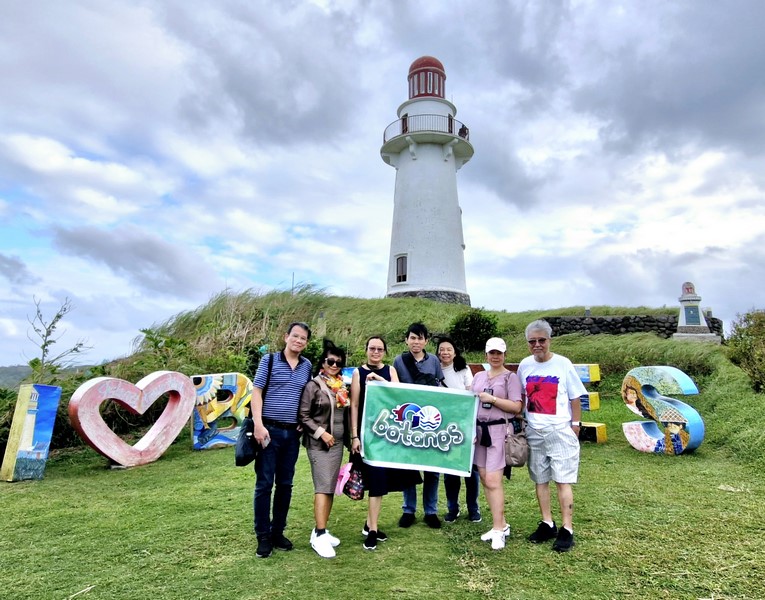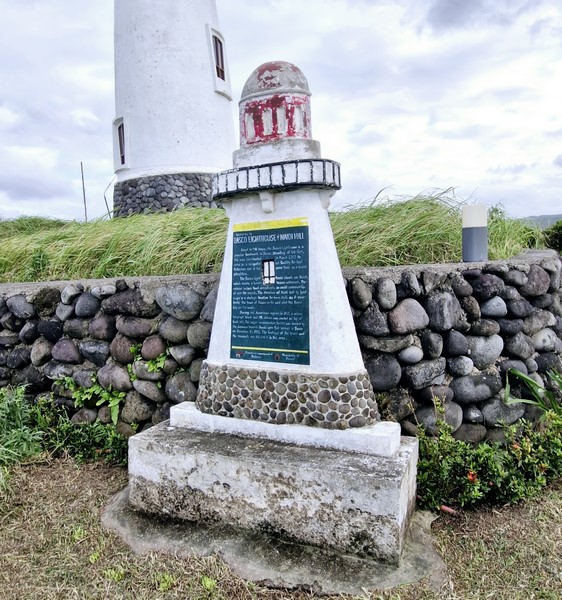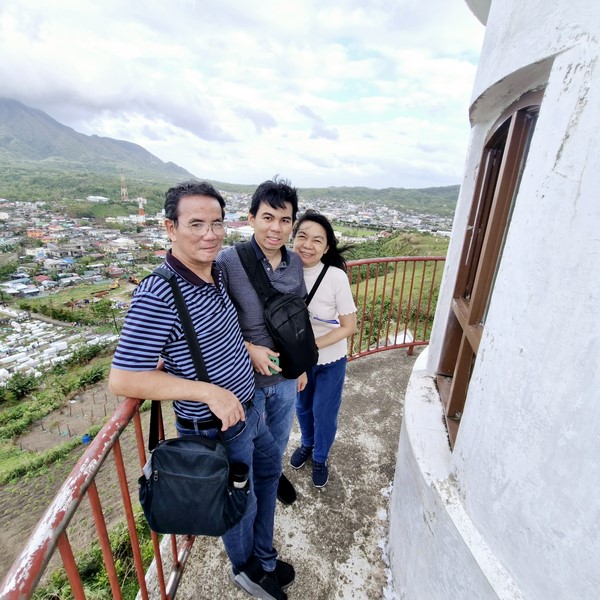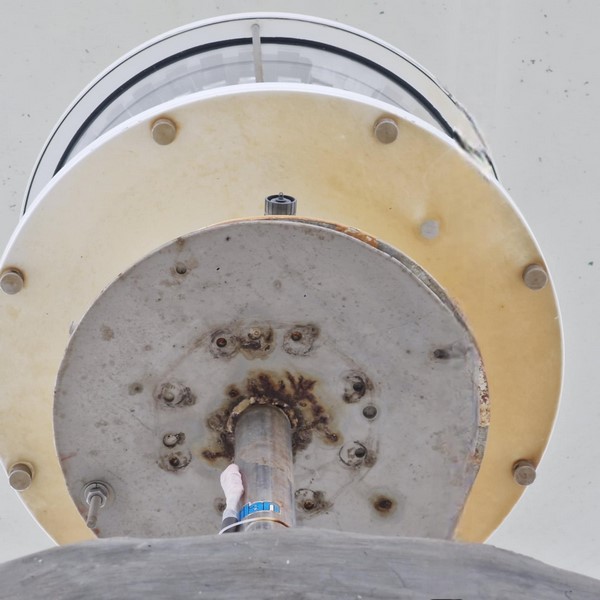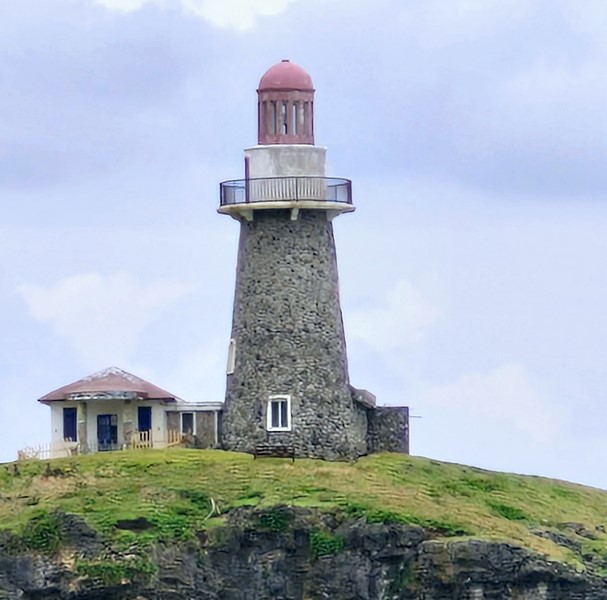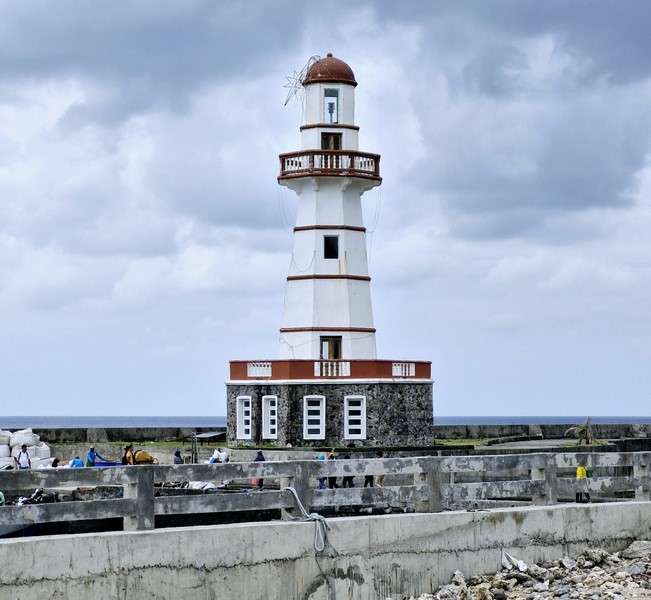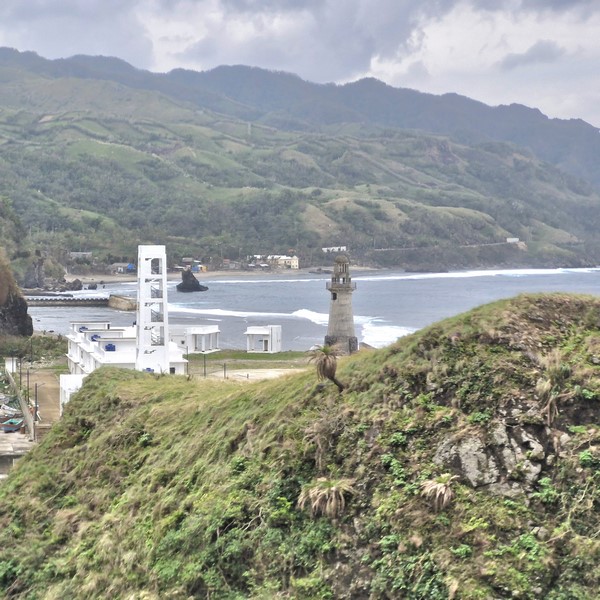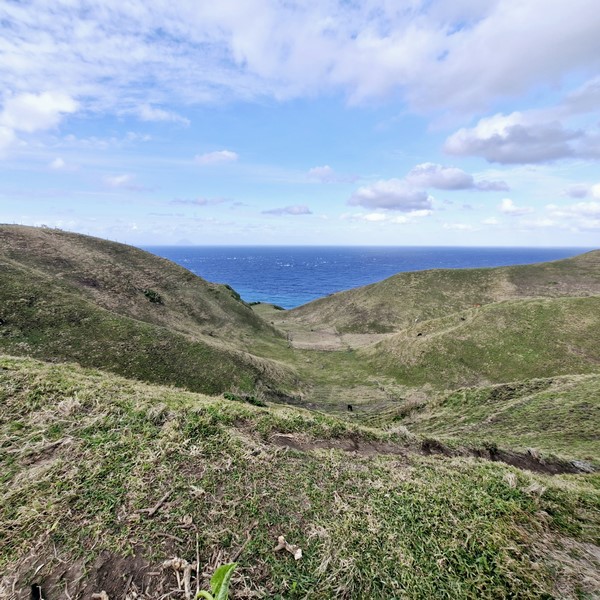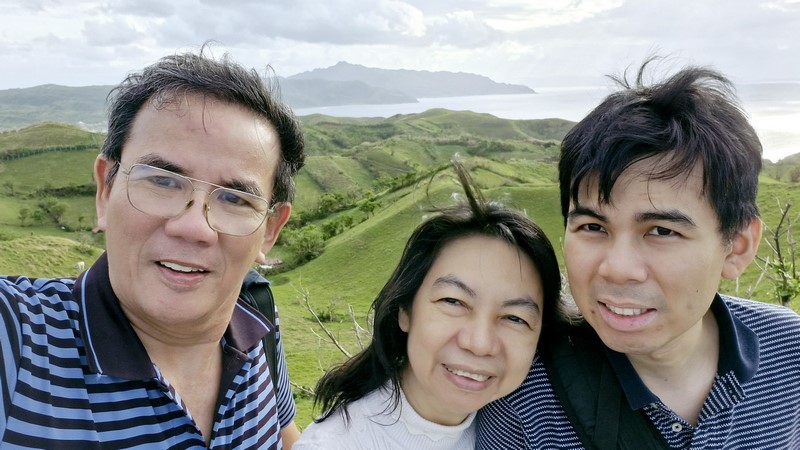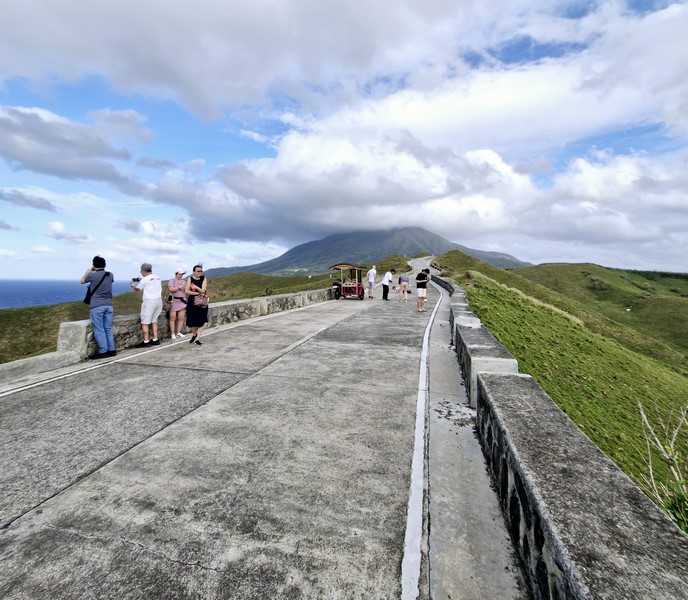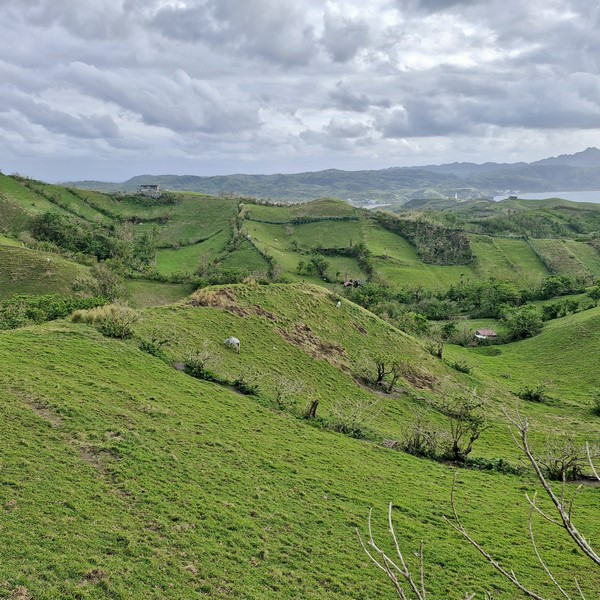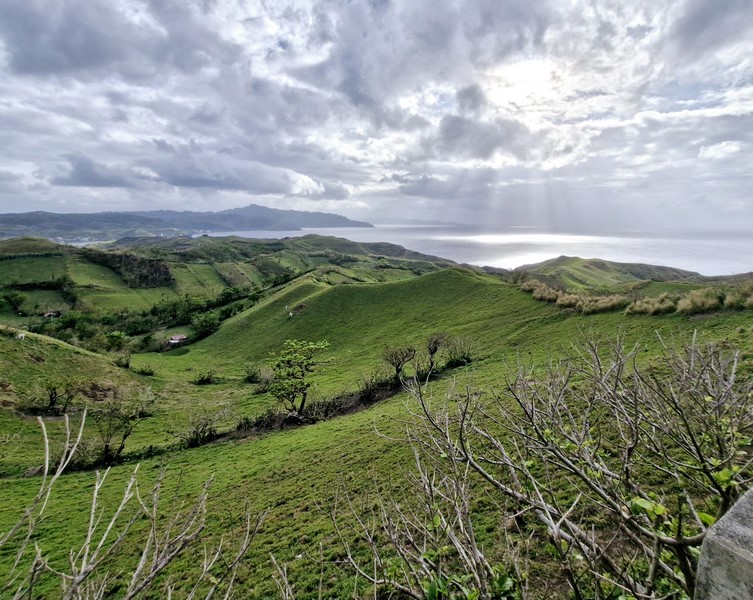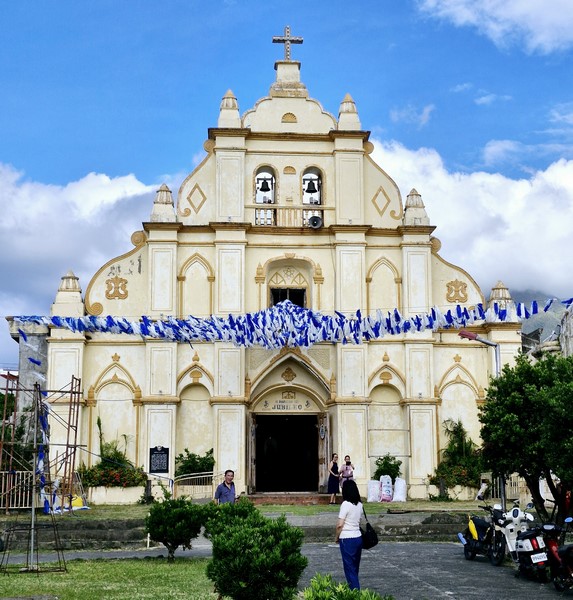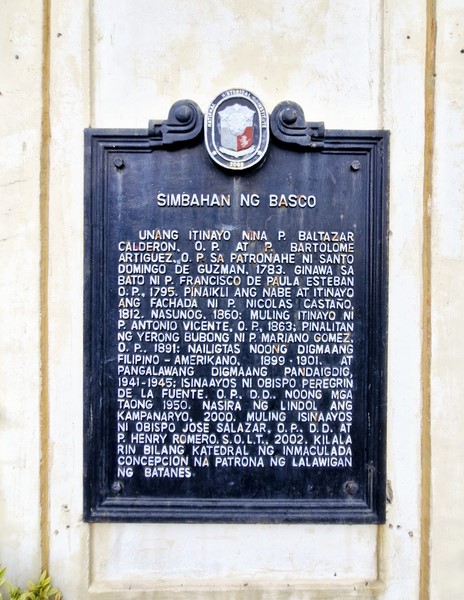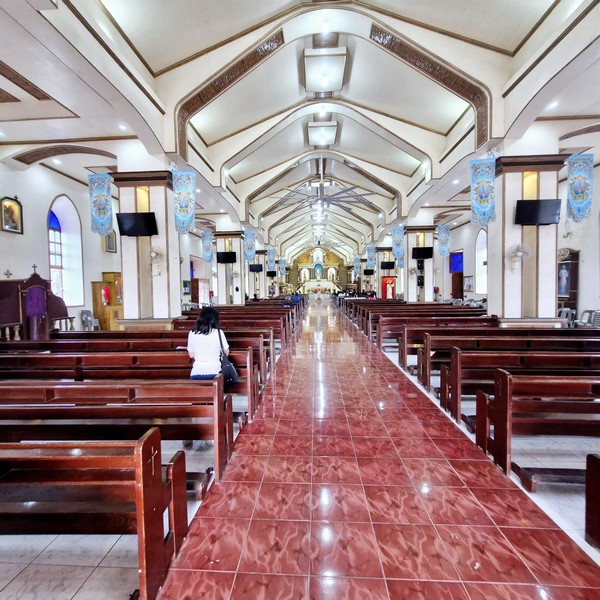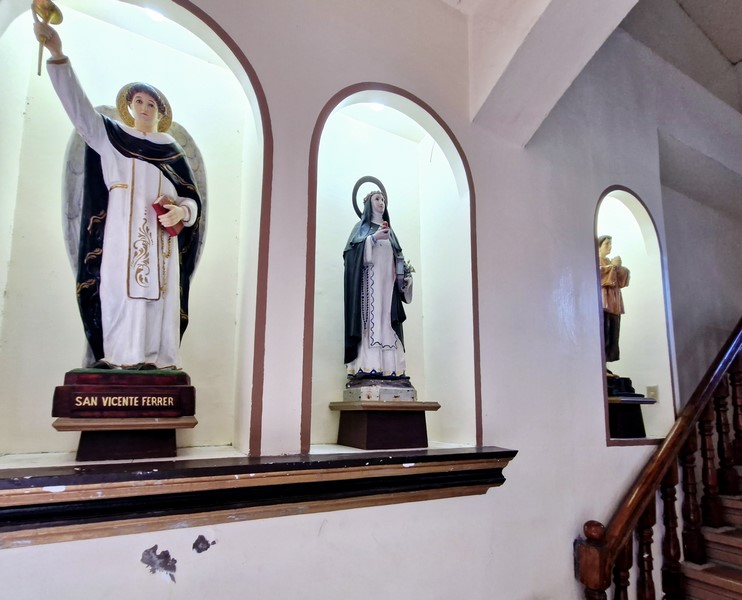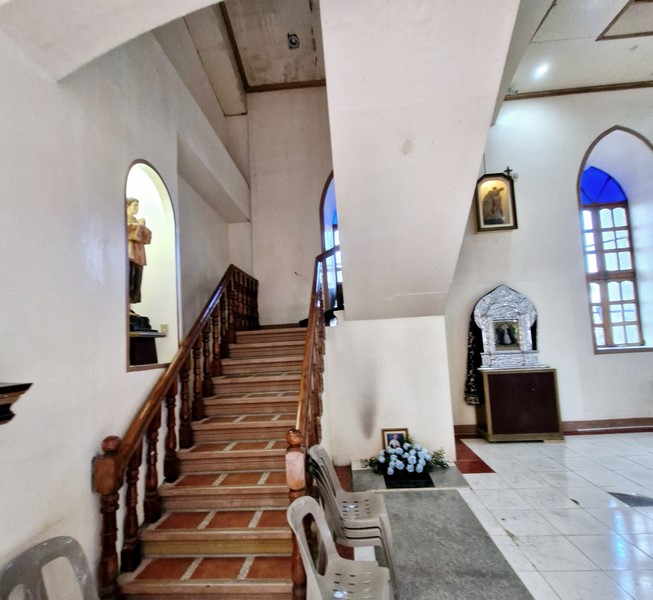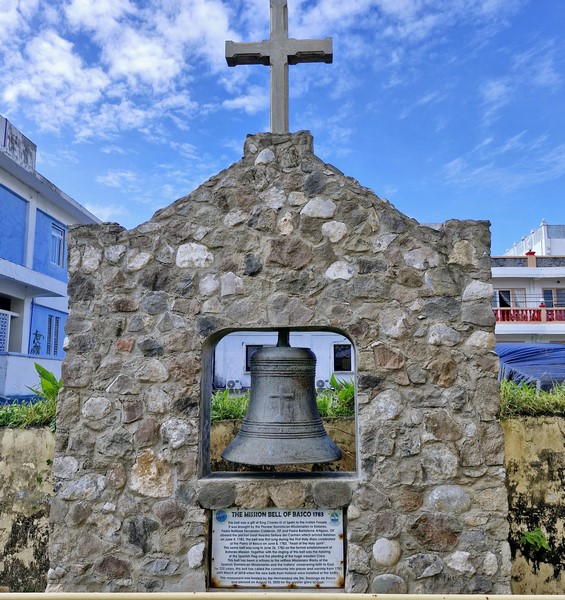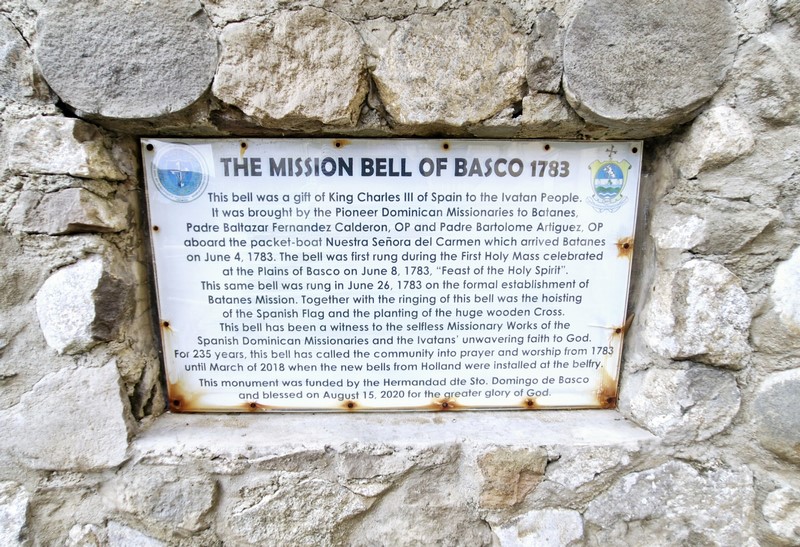On our way to Mahatao town proper, we made a short stopover at the scenic and secluded, beautiful white sand Maydangeb White Beach and, later, passed by the small but equally beautiful Blue Lagoon, both located just beside the national road. Both are also among the few places in Batanes where one can go for a relaxed and safe swim.
The quite cozy Maydangeb White Beach, a popular spot for swimming and picture taking, is flanked by rocky promontories and fringed by coconut trees, providing natural shade for those who wish to relax under them, plus it is often not crowded, providing a quiet and relaxing environment for visitors.
The 150 to 200-m. long beach is accessible during both high and low (though swimming may require walking a bit far from the shore) tides. For beachgoers, it a budget-friendly option as the beach is free to enter.
The latter, just around the corner, concealed by rocky cliffs, is more commonly known as Huhmurun by the locals. During the Spanish era, it was called the Spanish Lagoon or Spaniard’s Lagoon because only Spaniards were allowed to swim in this natural pool.
Now open to both locals and tourists alike, it has crystal-clear waters that turn blue during the summer season. Though accessible from the highway, you have to walk a few meters down a inconspicuous, steep and rocky trail. Around the area are deep ravines and rock formations.
Maydangeb White Beach: National Rd, Homoron, 5901 Mahatao, Batanes.
How to Get There: Mahatao is located 13.4 kms. (a 30-min. drive) south of Basco.
Provincial Heritage and Tourism Office (PHTO): Mobile number: (0929) 230-5934. Website: www.breathtakingbatanes.com.

